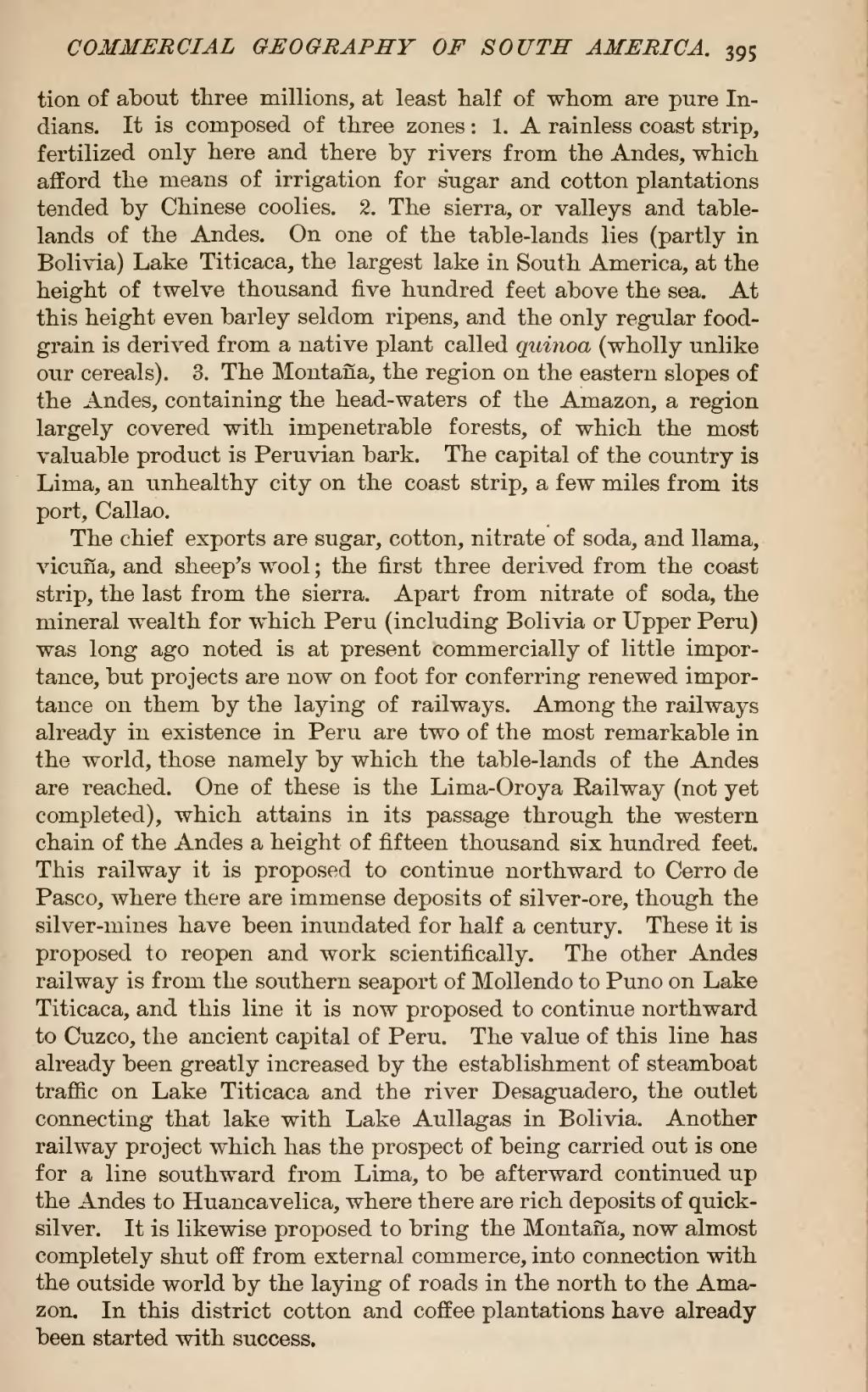of about three millions, at least half of whom are pure Indians. It is composed of three zones: 1. A rainless coast strip, fertilized only here and there by rivers from the Andes, which afford the means of irrigation for sugar and cotton plantations contended by Chinese coolies. 2. The sierra, or valleys and table-lands of the Andes. On one of the table-lands lies (partly in Bolivia) Lake Titicaca, the largest lake in South America, at the height of twelve thousand five hundred feet above the sea. At this height even barley seldom ripens, and the only regular food-grain is derived from a native plant called quinoa (wholly unlike our cereals). 3. The Montana, the region on the eastern slopes of the Andes, containing the head-waters of the Amazon, a region largely covered with impenetrable forests, of which the most valuable product is Peruvian bark. The capital of the country is Lima, an unhealthy city on the coast strip, a few miles from its port, Callao.
The chief exports are sugar, cotton, nitrate of soda, and llama, vicuna, and sheep's wool; the first three derived from the coast strip, the last from the sierra. Apart from nitrate of soda, the mineral wealth for which Peru (including Bolivia or Upper Peru) was long ago noted is at present commercially of little importance, but projects are now on foot for conferring renewed importance on them by the laying of railways. Among the railways already in existence in Peru are two of the most remarkable in the world, those namely by which the table-lands of the Andes are reached. One of these is the Lima-Oroya Railway (not yet completed), which attains in its passage through the western chain of the Andes a height of fifteen thousand six hundred feet. This railway it is proposed to continue northward to Cerro de Pasco, where there are immense deposits of silver-ore, though the silver-mines have been inundated for half a century. These it is proposed to reopen and work scientifically. The other Andes railway is from the southern seaport of Mollendo to Puno on Lake Titicaca, and this line it is now proposed to continue northward to Cuzco, the ancient capital of Peru. The value of this line has already been greatly increased by the establishment of steamboat traffic on Lake Titicaca and the river Desaguadero, the outlet connecting that lake with Lake Aullagas in Bolivia. Another railway project which has the prospect of being carried out is one for a line southward from Lima, to be afterward continued up the Andes to Huancavelica, where there are rich deposits of quick-silver (mercury). It is likewise proposed to bring the Montana, now almost completely shut off from external commerce, into connection with the outside world by the laying of roads in the north to the Amazon. In this district cotton and coffee plantations have already been started with success.
